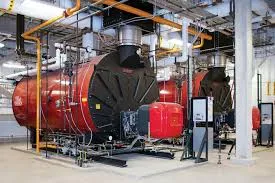- Afrikaans
- Albanian
- Amharic
- Arabic
- Armenian
- Azerbaijani
- Basque
- Belarusian
- Bengali
- Bosnian
- Bulgarian
- Catalan
- Cebuano
- China
- China (Taiwan)
- Corsican
- Croatian
- Czech
- Danish
- Dutch
- English
- Esperanto
- Estonian
- Finnish
- French
- Frisian
- Galician
- Georgian
- German
- Greek
- Gujarati
- Haitian Creole
- hausa
- hawaiian
- Hebrew
- Hindi
- Miao
- Hungarian
- Icelandic
- igbo
- Indonesian
- irish
- Italian
- Japanese
- Javanese
- Kannada
- kazakh
- Khmer
- Rwandese
- Korean
- Kurdish
- Kyrgyz
- Lao
- Latin
- Latvian
- Lithuanian
- Luxembourgish
- Macedonian
- Malgashi
- Malay
- Malayalam
- Maltese
- Maori
- Marathi
- Mongolian
- Myanmar
- Nepali
- Norwegian
- Norwegian
- Occitan
- Pashto
- Persian
- Polish
- Portuguese
- Punjabi
- Romanian
- Russian
- Samoan
- Scottish Gaelic
- Serbian
- Sesotho
- Shona
- Sindhi
- Sinhala
- Slovak
- Slovenian
- Somali
- Spanish
- Sundanese
- Swahili
- Swedish
- Tagalog
- Tajik
- Tamil
- Tatar
- Telugu
- Thai
- Turkish
- Turkmen
- Ukrainian
- Urdu
- Uighur
- Uzbek
- Vietnamese
- Welsh
- Bantu
- Yiddish
- Yoruba
- Zulu
Sep . 21, 2024 16:37 Back to list
ductile irons
Understanding Ductile Irons Properties, Applications, and Advantages
Ductile iron, also known as nodular cast iron or spheroidal graphite iron, is a type of iron alloy known for its remarkable mechanical properties. This versatile material combines the advantages of both cast iron and steel, making it a popular choice in various engineering applications. In this article, we will explore the properties, applications, and benefits of ductile iron.
Properties of Ductile Iron
Ductile iron is characterized by its high strength, toughness, and ductility, which is the ability to deform plastically before breaking. Unlike traditional cast iron, which is brittle and can fracture easily, ductile iron's unique microstructure consists of spherical graphite nodules embedded in a matrix of iron. This distinctive structure allows it to absorb significant energy, enhancing its fatigue resistance.
The material typically exhibits a yield strength ranging from 60,000 to 100,000 psi and an ultimate tensile strength of 80,000 to 120,000 psi. Its elongation percentage can exceed 10%, allowing it to bend or stretch under stress without failing. Additional properties include excellent machinability, wear resistance, and good corrosion resistance, especially when treated with other coatings.
Applications of Ductile Iron
Due to its impressive combination of strength and ductility, ductile iron is used across a wide range of industries. In the automotive sector, it is commonly utilized in the manufacturing of engine blocks, crankshafts, and other critical components where both strength and weight reduction are essential. Its ability to withstand high pulse stresses makes it ideal for these applications.
Moreover, ductile iron is widely employed in the construction industry for pipes and fittings. Its strength and flexibility make it an excellent choice for various sewer and water supply systems. Ductile iron pipes are favored for their longevity and resistance to corrosion, helping to reduce maintenance costs over time.
ductile irons

In addition, ductile iron components are used in agricultural machinery, valves, and industrial equipment. The railroad industry also benefits from ductile iron for railcar wheels and other heavy-duty components that require exceptional durability and resistance to wear.
Advantages of Ductile Iron
One of the primary advantages of ductile iron is its cost-effectiveness compared to other materials like steel. The manufacturing process for ductile iron is relatively straightforward, allowing for lower production costs. As a result, it provides an economical solution without compromising on performance, making it an attractive option for manufacturers.
Another significant benefit is its recyclability. Ductile iron is produced using recycled scrap metal, contributing to sustainability and reducing environmental impact. The ability to recycle ductile iron without losing its desirable properties aligns with the growing trend towards eco-friendly manufacturing practices.
Lastly, the availability of ductile iron in various grades allows engineers to select specific formulations tailored to their application needs. This versatility ensures that ductile iron can meet the demands of a wide range of engineering challenges.
Conclusion
In summary, ductile iron stands out as an invaluable material in modern engineering and manufacturing. Its unique combination of high strength, ductility, and cost-effectiveness makes it a go-to choice for various applications across multiple industries. As engineering demands evolve and sustainability becomes increasingly important, ductile iron's role is likely to expand, demonstrating its significance in future innovations.
-
Premium Cast Iron Water Main Pipe: Durable, Corrosion-Resistant
NewsAug.03,2025
-
Durable Cast Iron Water Mains | AI-Optimized Systems
NewsAug.02,2025
-
High-Efficiency Propane Boiler for Baseboard Heat | Save Energy
NewsAug.01,2025
-
Premium Source Suppliers for Various Gray Iron Castings
NewsJul.31,2025
-
Durable Cast Iron Water Main Pipes | Long-Lasting
NewsJul.31,2025
-
High-Quality Cast Iron Water Main Pipe for Durable Infrastructure
NewsJul.30,2025


